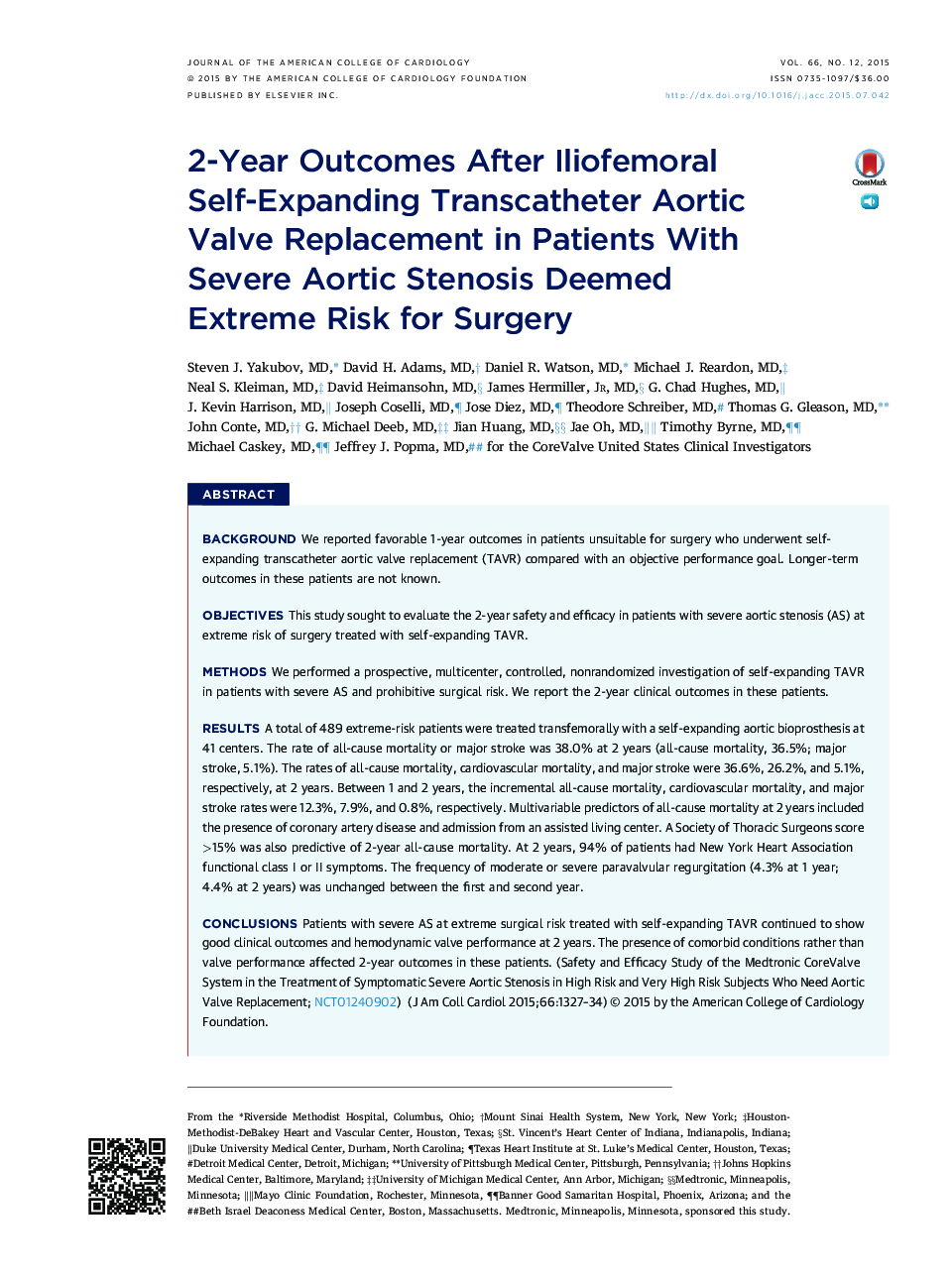| کد مقاله | کد نشریه | سال انتشار | مقاله انگلیسی | نسخه تمام متن |
|---|---|---|---|---|
| 2943560 | 1577030 | 2015 | 8 صفحه PDF | دانلود رایگان |

BackgroundWe reported favorable 1-year outcomes in patients unsuitable for surgery who underwent self-expanding transcatheter aortic valve replacement (TAVR) compared with an objective performance goal. Longer-term outcomes in these patients are not known.ObjectivesThis study sought to evaluate the 2-year safety and efficacy in patients with severe aortic stenosis (AS) at extreme risk of surgery treated with self-expanding TAVR.MethodsWe performed a prospective, multicenter, controlled, nonrandomized investigation of self-expanding TAVR in patients with severe AS and prohibitive surgical risk. We report the 2-year clinical outcomes in these patients.ResultsA total of 489 extreme-risk patients were treated transfemorally with a self-expanding aortic bioprosthesis at 41 centers. The rate of all-cause mortality or major stroke was 38.0% at 2 years (all-cause mortality, 36.5%; major stroke, 5.1%). The rates of all-cause mortality, cardiovascular mortality, and major stroke were 36.6%, 26.2%, and 5.1%, respectively, at 2 years. Between 1 and 2 years, the incremental all-cause mortality, cardiovascular mortality, and major stroke rates were 12.3%, 7.9%, and 0.8%, respectively. Multivariable predictors of all-cause mortality at 2 years included the presence of coronary artery disease and admission from an assisted living center. A Society of Thoracic Surgeons score >15% was also predictive of 2-year all-cause mortality. At 2 years, 94% of patients had New York Heart Association functional class I or II symptoms. The frequency of moderate or severe paravalvular regurgitation (4.3% at 1 year; 4.4% at 2 years) was unchanged between the first and second year.ConclusionsPatients with severe AS at extreme surgical risk treated with self-expanding TAVR continued to show good clinical outcomes and hemodynamic valve performance at 2 years. The presence of comorbid conditions rather than valve performance affected 2-year outcomes in these patients. (Safety and Efficacy Study of the Medtronic CoreValve System in the Treatment of Symptomatic Severe Aortic Stenosis in High Risk and Very High Risk Subjects Who Need Aortic Valve Replacement; NCT01240902)
Journal: Journal of the American College of Cardiology - Volume 66, Issue 12, 22 September 2015, Pages 1327–1334